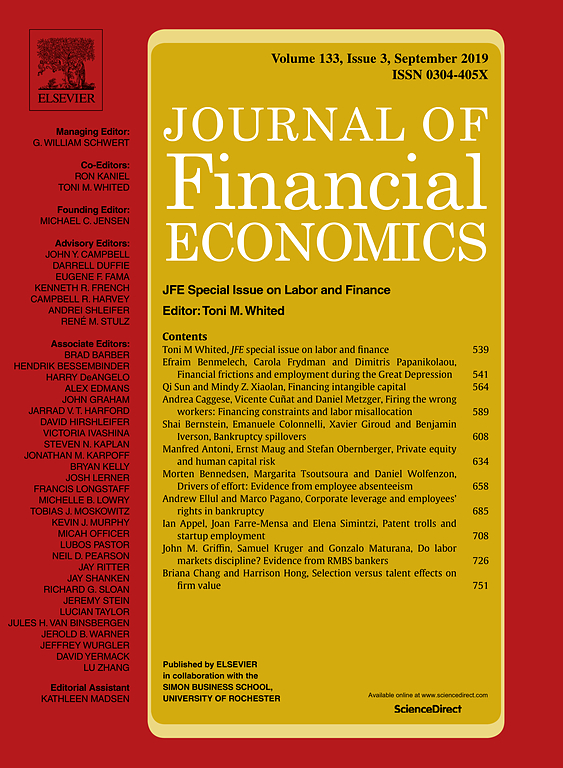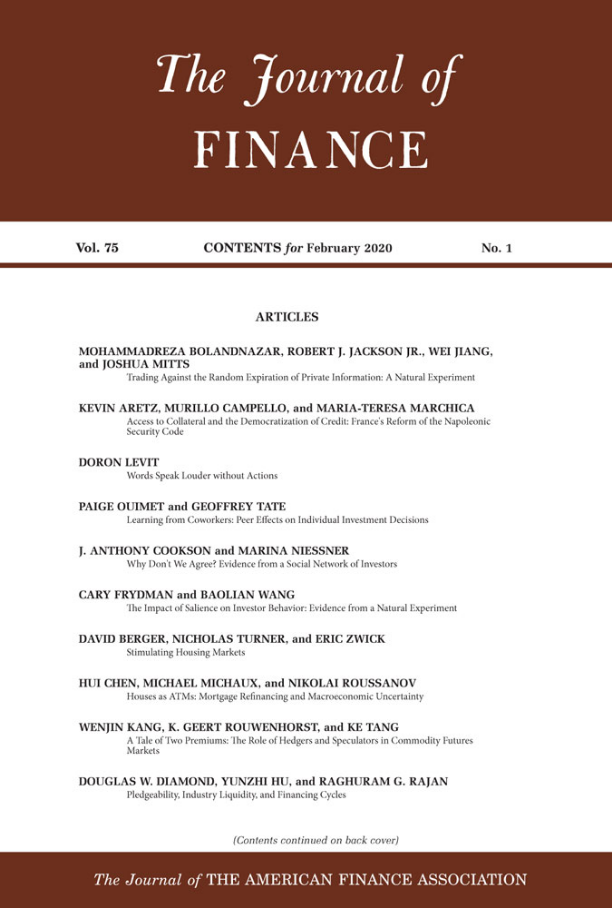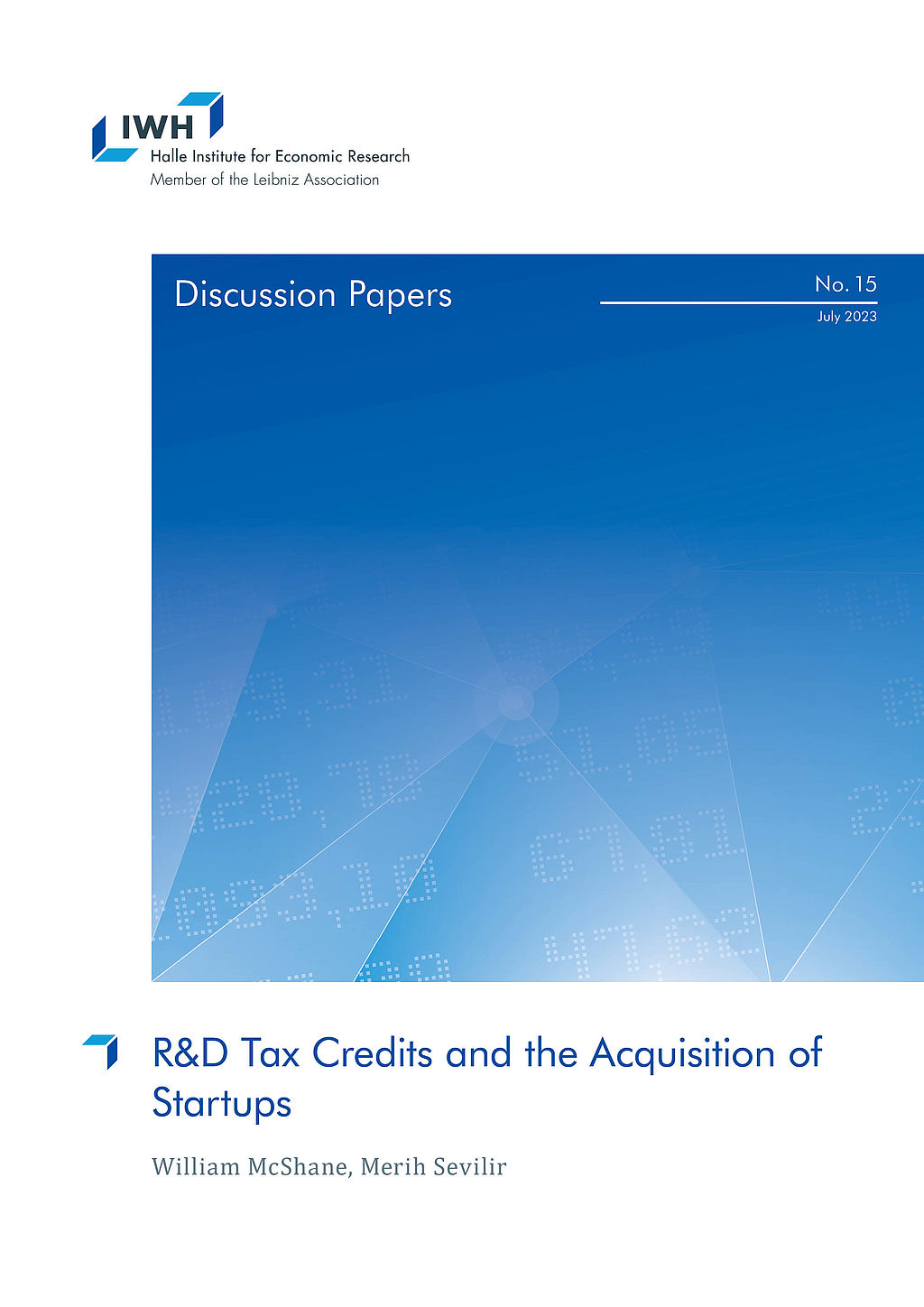Public Capital Markets and Startup Creation
This research group studies the creation of startups with a particular focus on established firms' role as providers of capital and skilled labour for startup creation and growth.
Research Cluster
Economic Dynamics and StabilityYour contact

Leiter - Department Laws, Regulations and Factor Markets
Refereed Publications

The Labor Effects of Judicial Bias in Bankruptcy
in: Journal of Financial Economics, No. 2, 2023
Abstract
We study the effect of judicial bias favoring firm continuation in bankruptcy on the labor market outcomes of employees by exploiting the random assignment of cases across courts in the State of São Paulo in Brazil. Employees of firms assigned to courts that favor firm continuation are more likely to stay with their employer, but they earn, on average, lower wages three to five years after bankruptcy. We discuss several potential mechanisms that can rationalize this result, and provide evidence that imperfect information about outside options in the local labor market and adjustment costs associated with job change play an important role.

Political Ideology and International Capital Allocation
in: Journal of Financial Economics, No. 2, 2023
Abstract
Does investors’ political ideology shape international capital allocation? We provide evidence from two settings—syndicated corporate loans and equity mutual funds—to show ideological alignment with foreign governments affects the cross-border capital allocation by U.S. institutional investors. Ideological alignment on both economic and social issues plays a role. Our empirical strategy ensures direct economic effects of foreign elections or government ties between countries are not driving the result. Ideological distance between countries also explains variation in bilateral investment. Combined, our findings imply ideological alignment is an important, omitted factor in models of international capital allocation.

Who Creates New Firms When Local Opportunities Arise?
in: Journal of Financial Economics, No. 1, 2022
Abstract
We examine the characteristics of the individuals who become entrepreneurs when local opportunities arise. We identify local demand shocks by linking fluctuations in global commodity prices to municipality-level agricultural endowments in Brazil. We find that the firm creation response is mostly driven by young and skilled individuals. The characteristics of these responsive entrepreneurs are significantly different from those of average entrepreneurs in the economy. By structurally estimating a novel two-sector model of a local economy, we highlight how the demographic composition of the local population can significantly affect the entrepreneurial responsiveness of the economy.

Access to Public Capital Markets and Employment Growth
in: Journal of Financial Economics, No. 3, 2021
Abstract
This paper examines the effect of going public on firm-level employment. To establish a causal effect, we employ a novel data set of private firms to investigate employment growth in IPO firms relative to a group of firms that file for an IPO but subsequently withdraw their offering. We find that employment increases significantly after going public, and the increase is more pronounced in industries with requirements for highly skilled labor and greater dependence on external finance. Improved ability to undertake acquisitions and a strategic shift toward commercialization, rather than agency problems, explain employment growth. Overall, these results highlight the importance of going public for firms' employment policies.

Do Household Wealth Shocks Affect Productivity? Evidence From Innovative Workers During the Great Recession
in: Journal of Finance, No. 1, 2021
Abstract
We investigate how the deterioration of household balance sheets affects worker productivity, and in turn economic downturns. Specifically, we compare the output of innovative workers who experienced differential declines in housing wealth during the financial crisis but were employed at the same firm and lived in the same metropolitan area. We find that, following a negative wealth shock, innovative workers become less productive and generate lower economic value for their firms. The reduction in innovative output is not driven by workers switching to less innovative firms or positions. These effects are more pronounced among workers at greater risk of financial distress.
Working Papers

R&D Tax Credits and the Acquisition of Startups
in: IWH Discussion Papers, No. 15, 2023
Abstract
We propose a novel mechanism through which established firms contribute to the startup ecosystem: the allocation of R&D tax credits to startups via the M&A channel. We show that when established firms become eligible for R&D tax credits, they increase their R&D and M&A activity. In particular, they acquire more venture capital (VC)-backed startups, but not non-VC-backed firms. Moreover, the impact of R&D tax credits on firms’ R&D is increasing with their acquisition of VC-backed startups. The results suggest that established firms respond to R&D tax credits by acquiring startups rather than solely focusing on increasing their R&D intensity in-house. We also highlight evidence that startups do not appear to benefit from R&D tax credits directly, perhaps because they typically lack the taxable income necessary to directly benefit from the tax credits. In this context, established firms can play an intermediary role by acquiring startups and reallocating R&D tax credits, effectively relaxing the financial constraints faced by startups.

Going Public and the Internal Organization of the Firm
in: SSRN Working Paper, May 2022
Abstract
We examine how firms adapt their organization when they go public. To conform with the requirements of public capital markets, we expect IPO firms to become more organized, making the firm more accountable and its human capital more easily replaceable. We find that IPO firms transform into a more hierarchical organization with smaller departments. Managerial oversight increases. Organizational functions dedicated to accounting, finance, information and communication, and human resources become much more prominent. Employee turnover is sizeable and directly related to changes in hierarchical layers. New hires are better educated, but younger and less experienced than incumbents, which reflects the staffing needs of a more hierarchical organization. Wage inequality increases as firms become more hierarchical. Overall, going public is associated with a comprehensive transformation of the firm's organization which becomes geared towards efficiently operating a public firm.

Private Equity in the Hospital Industry
in: ECGI Working Paper, No. 787, 2021
Abstract
We examine employment and patient outcomes at hospitals acquired by private equity (PE) firms and PE-backed hospitals. While employment declines at PE-acquired hospitals, core medical workers (physicians, nurses, and pharmacists) increase significantly. The proportion of wages paid to core workers increases at PE-acquired hospitals whereas the proportion paid to administrative employees declines. These results are most pronounced for deals where the acquirers are publicly traded PE-backed hospitals. Non-PE-backed acquirers also cut employment but do not increase core workers or reduce administrative expenditures. Finally, PE-backed acquirers are not associated with worse patient satisfaction or mortality rates compared to their non-PE-backed counterparts.












